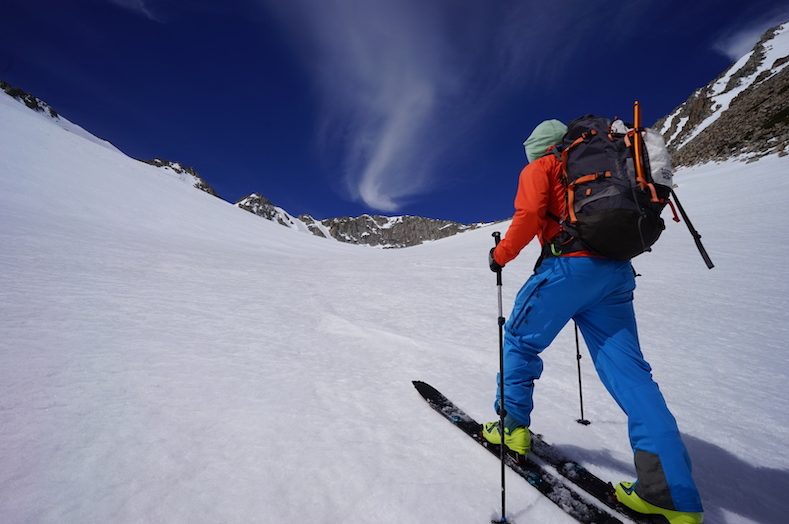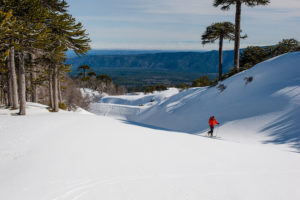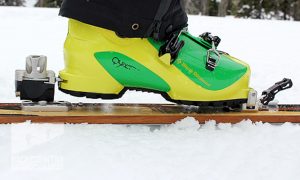What are Backcountry Ski Touring Bindings?

 The time has come. You’re ready to leave the boundaries of the resort and venture out into the world of backcountry ski touring. We couldn’t be more stoked for you! Before you head out, you should make sure you’ve got the right bindings for an epic time touring. I hate to break it to you, but your downhill alpine bindings won’t cut in the backcountry. Below we’ll go through and explain alpine touring bindings and give you recommendations on what we use here at Alpenglow Expeditions in North Lake Tahoe, CA.
The time has come. You’re ready to leave the boundaries of the resort and venture out into the world of backcountry ski touring. We couldn’t be more stoked for you! Before you head out, you should make sure you’ve got the right bindings for an epic time touring. I hate to break it to you, but your downhill alpine bindings won’t cut in the backcountry. Below we’ll go through and explain alpine touring bindings and give you recommendations on what we use here at Alpenglow Expeditions in North Lake Tahoe, CA.
AT Bindings vs Alpine Bindings
The alpine bindings that you use when you’re ripping resort groomers are made for one thing: downhill skiing. Alpine touring (AT) bindings are designed for both uphill and downhill travel.
AT Bindings explained
AT bindings can come in a few different designs, but the idea is the same with all of them. They allow you to clip your boots into the toe of the binding while freeing the heel to flex forward and backwards for uphill climbing. When you’re ready to transition from climbing to skiing, the binding will shift from a climbing to a skiing mode, allowing you to enjoy the turns that you’ve earned.
AT Frame Bindings

The backcountry ski touring bindings that are most similar to downhill alpine bindings are Frame Bindings. Frame bindings are essentially alpine bindings that have a frame connecting the toe to the heel. When using frame bindings to climb, the heel of the binding will lift up and come with your foot as you step forward. When it’s time to transition, the heel frame will click into place and you’ll be ready to ski down.
The bonus of a frame binding is that it provides you with great downhill performance. The downside, however, is that they are heavy. Having the entire frame pick up with your foot each step adds up over the thousands of steps made during a tour. These bindings can also create a “dead-spot” in the ski due to the continuous tension held between the toe and heel binding. Frame bindings are compatible with boots that do not have the tech binding pin-hole molding on the toe, but you’ll want to make sure that you have a hike/ski mode on your boot. For more info on backcountry ski touring boots, check out our Backcountry Touring Boots Blog. While frame bindings work, they are not our preferred backcountry ski touring binding.
AT Tech Bindings
The backcountry ski touring bindings that we use here at Alpenglow Expeditions are Tech Bindings. Tech bindings use metal pins that connect to pin-hole moldings in the toe of the boot, keeping the toe in place while climbing uphill without requiring the heel to be attached to the binding. By freeing up the heel, tech bindings are much lighter and more efficient when moving uphill. Tech bindings require a tech-compatible boot, so make sure you’ve got the right boot when getting your tech binding set up! Check out our blog covering backcountry ski boots in the link above for more details on boots!
TÜV-Certified Tech Bindings

TÜV-Certified Tech Bindings combine the reliability and certified safety-release value of Alpine Bindings with the lightweight efficacy of tech bindings. They add a little bit a weight using extra materials for the binding and a break, but give a larger margin of safety when taking a fall and ejecting your skis.
TÜV is an independent organization that tests bindings and gives safety certifications for all bindings that pass laboratory and in-field tests. Meaning that tech bindings that are TÜV-certified have a similar safety release to downhill alpine bindings. TÜV-certified tech bindings are a great option for those who are looking for a reliable binding that utilizes the uphill efficiency of a tech binding. We use Marker Kingpin Tech Bindings, a TÜV-certified binding, on all of our Alpenglow Expeditions rental ski’s.
Traditional Tech Bindings

Traditional Tech Bindings are the lightest binding option, using a box heel-piece that clicks into the heel of the tech-compatible boot when it’s time to ski. This system uses a vertical and horizontal release setting with a high fixed release value on the toe, making the safety release less responsive when charging hard downhill. Traditional tech bindings also often do not have brakes, instead using a tether that connects the boot to the ski to keep the ski from rocketing downhill after ejecting in a fall. Traditional tech bindings are light and efficient for climbing, but have some drawbacks during the skiing portion of a tour.
Splitboard Bindings
Splitboard Bindings are also different from their downhill snowboard binding counterpart. The bindings have a touring mode that allows a rider to hike uphill and transition the bindings to ride back down. They are compatible with most downhill snowboarding boots.
Bottom Line
Alpine touring ski bindings are different from downhill alpine bindings. There are a few touring binding styles, but we recommend Tech Bindings because they are lightweight and efficient for both hiking and skiing. Make sure that your boots are compatible with the bindings that you choose, as there are different boots for different bindings!
Ready to book?
Our reservation system is open and accepting bookings for AIARE 1 avalanche courses, Backcountry 1.0,2.0 & 3.0, as well as our full menu of winter adventure and education. If you are still feeling uncertain, we’ve relaxed our cancelation policy to make booking worry-free. Book a day out with us and if we can’t be open due to COVID-19, you’ll get a credit to use at a later date or a full refund.